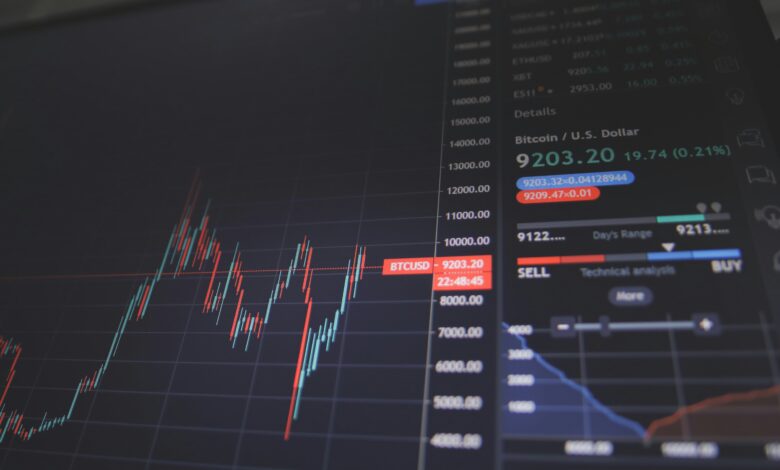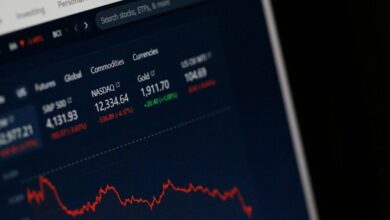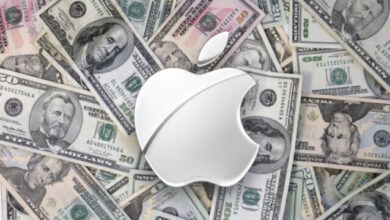How to Calculate the average stock price in 2025

According to Investor.gov , when you buy a particular stock in scattered quantities and at different prices, you’ll need to know the average price or cost of your trade to help you determine whether the stock is a profitable investment. For example, you might buy shares of a stock for $22 one month and more shares of the same stock for $25 the next month. Your average stock price is equal to the total purchase price divided by the total number of shares purchased. The higher the stock price is above the average price of your position, the greater the profit you’ll make.
Here’s a free stock average calculator if you’re looking to save yourself some time. Here, I’ll explain how to calculate the adjusted average stock price and why we need to calculate the average buy or sell price.
How to calculate the average stock price after adjustment in 3 steps:
1- Enter the number of shares you purchased the first time and the total purchase cost. Do the same for the second share purchase; enter the number of shares and the total purchase cost.
2- If there is a third additional quantity, click “Add More” and fill in the two boxes in the same way as above. This will happen whenever you purchase the stock at a specific cost and quantity.
3- Finally, click on the “Calculate” button, and the result will be the average price, the total number of shares you own, and the total cost of the total shares.
✅ Example of calculating the average stock price after adjustment
To find out the cost of your stock purchases and determine whether a stock is a profitable investment, the higher the stock price above the average price of the stock you purchased, the greater the profit margin you will earn.
1. Your trading information:
To calculate your average stock, you’ll need all the information about your stock purchases. Your brokerage firm’s platform should also provide data for each trade you’ve made. If it doesn’t, you can contact your broker or check their website online, where your individual transactions should be listed within your account.
2. How many shares do you have?
First, add up the total number of shares you own. Most brokerage platforms list traders’ data, including purchases, sales, and the total number of shares in the portfolio. However, you can also calculate it by adding the number of shares in each individual purchase. For example, if you bought 100 shares of a particular stock at $10 each, 200 shares at $7 each, and 250 shares at $8.50, you have a total of 550 shares. Don’t forget to subtract the number of shares you sold immediately after purchasing them.
3. Calculate the total cost
Multiply the number of shares per purchase by the purchase price. In this example, multiply 100 by $10 to get $1,000, multiply 200 by $7 to get $1,400, and multiply 250 by $8.50 to get $2,125. Add the amount of each purchase to calculate the total cost of the shares. In this example, add $1,000, $1,400, and $2,125 to get a total cost of the shares of $4,525.
If you want to calculate the cost of fees and commissions to your average stock price, use the total cost of each trade, not just the stock price at the time of purchase. For example, if you bought 100 shares at $10 but paid $4.95 for the trade, the total cost of that trade would be $1,004.95, not $1,000.
4. Calculating the average purchase price of the stock:
Divide the total cost of the shares by the total number of shares you own to get the average purchase price of the shares. In this example, we divide $4,525 by 550 (the number of shares) and get an average share price of $8.23. [1]
✅ The mathematical equation for the average cost of a share
If you purchased your stocks at different quantities and prices, you’ll need to calculate the average cost of stocks to see how your portfolio is truly performing. What is the formula for calculating average stocks?
( Number of shares for the first time × share price for the first time ) + ( Number of shares for the second time × share price for the second time ) + ( Number of shares for the third time × share price for the third time ) + ( Number of shares for the fourth time × share price for the fourth time ) ÷ ( Number of shares for the first time + Number of shares for the second time + Number of shares for the third time + Number of shares for the fourth time ) = Average cost per share
The need to calculate the adjusted average share price arises when an investor in the stock market buys the same share in different quantities and at different times. This means buying the same share at different prices. Here, the investor needs to calculate the average cost to determine the average purchase price to evaluate the share’s profitability at a given moment. The average share price equation is: [(# of shares x purchase price) + (# of shares x second purchase price)] / total number of shares.
✅ Why do we need to calculate the average cost of purchasing a stock?
We need to calculate the average cost per share when we purchase a company’s stock in stages at different quantities and prices. The average cost per share is also known as dollar-cost averaging (DCA).
In general, the average stock price is an important tool for analyzing stocks and making investment decisions. Investors and analysts can rely on this indicator to evaluate a stock’s performance and determine whether it’s appropriate to sell or buy more of the stock.
Calculating the average cost of a stock reduces the impact of daily fluctuations in stock prices, allowing for a clearer and more objective analysis of stock performance over the long term. It can also be used to identify stock trends and identify support and resistance points. The average cost of a stock is also known as dollar-cost averaging (DCA). [2]
Summary
The investor still likes the stock and decides to buy 100 more shares at a lower price. The stock may have fallen on a bad market day, and he or she wants to buy more at a lower price. Sometimes, the stock price may have risen, but the investor still has good future prospects. Here, the investor needs to calculate the adjusted average stock price. A stock cost calculator can be used.
Calculating a stock’s moving average is an essential part of the trading and investment strategies of many investors and analysts. However, it should be considered just one tool within a suite of tools used by investors in market analysis and investment strategies.




